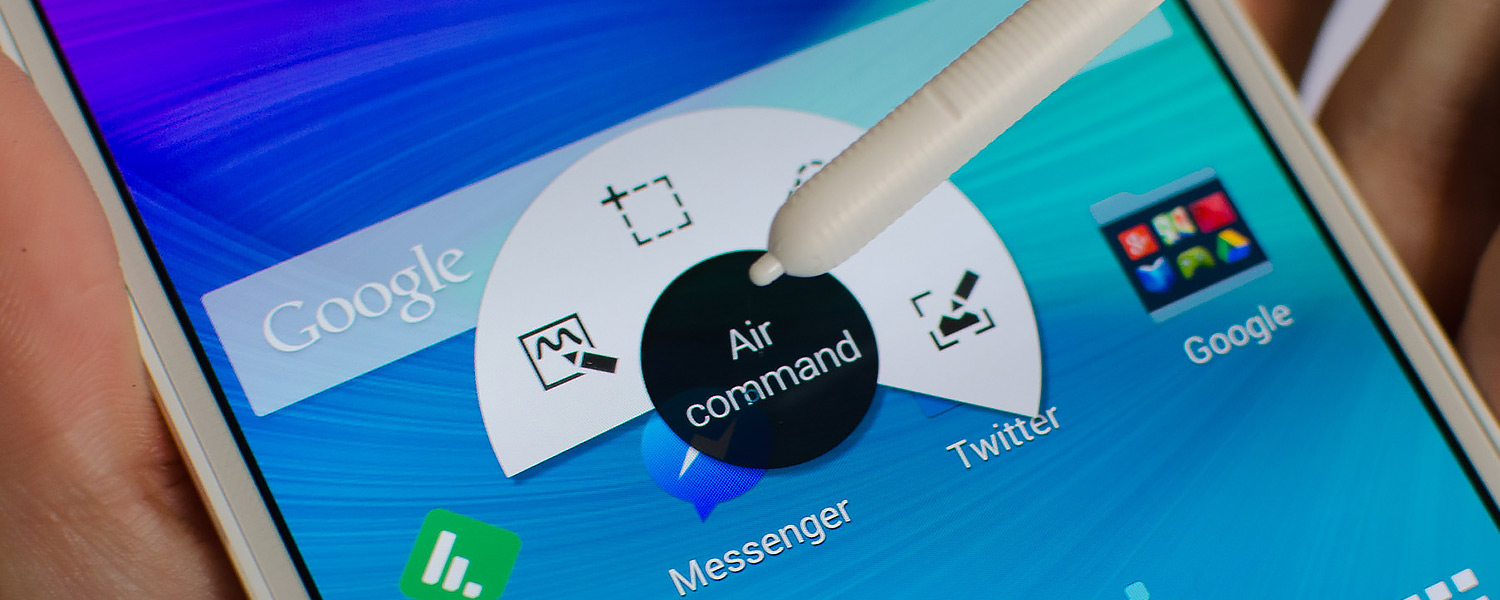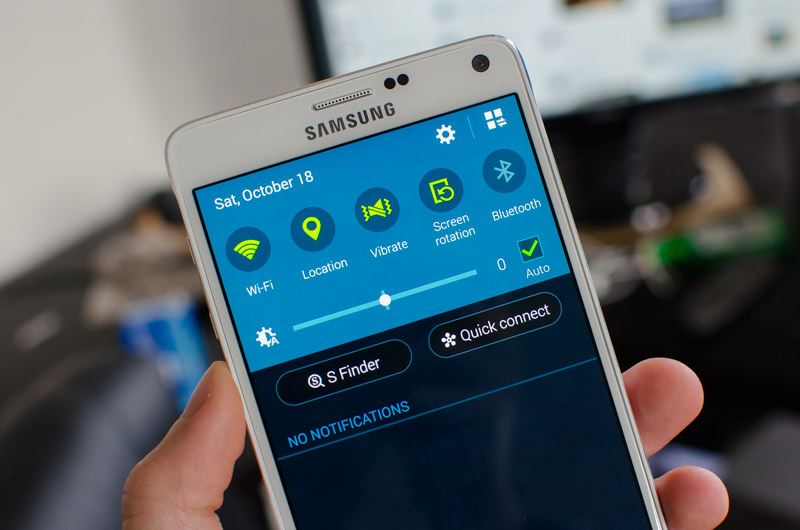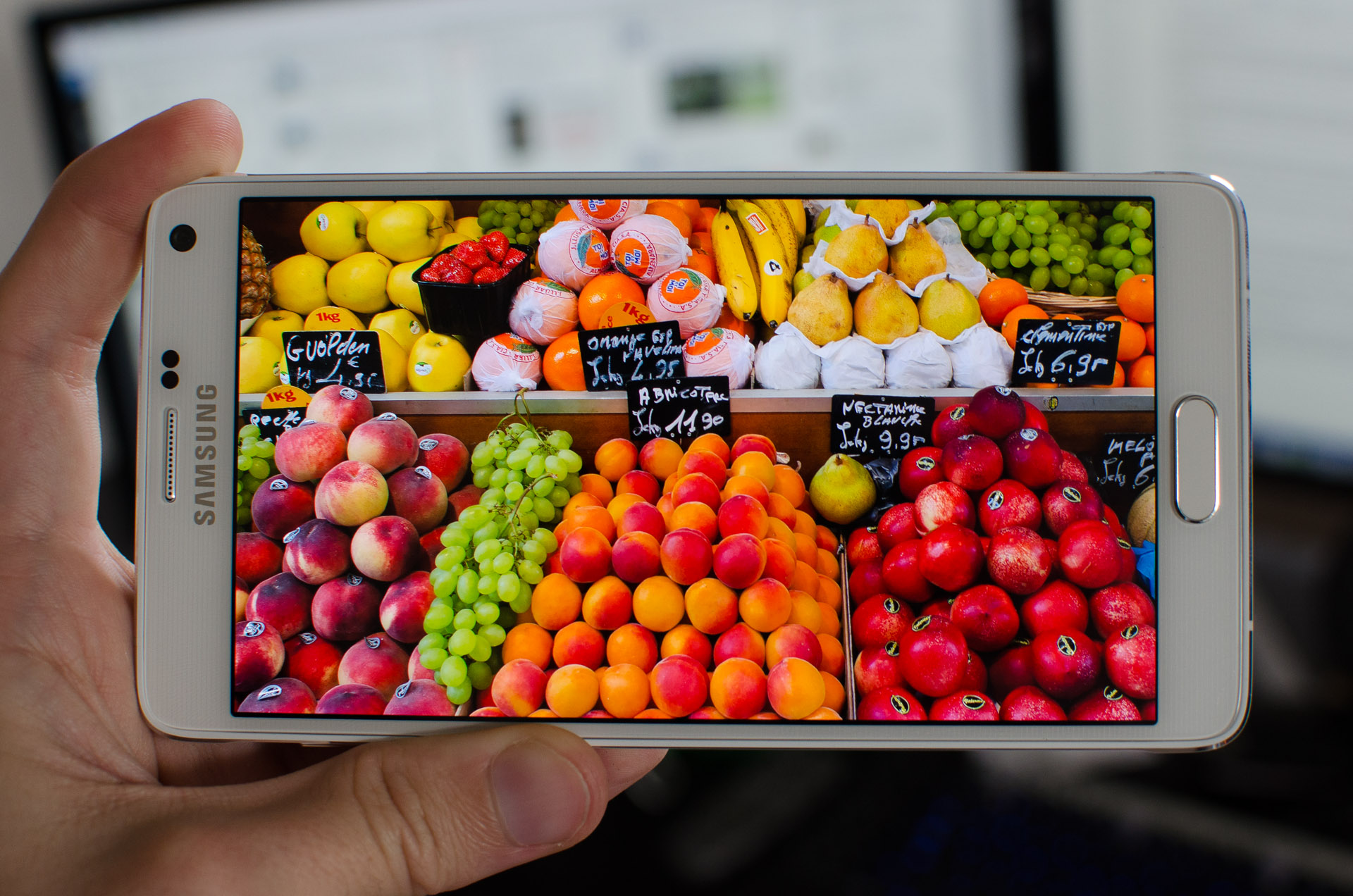Display: Quad HD Super AMOLED
Every year the Galaxy Note's display receives an upgrade, shifting from 5.2"/WXGA in the original model to 5.5"/720p in the Note II, then 5.7"/1080p in the Note 3, and now to 5.7"/WQHD in the Note 4. Although the size hasn't changed, the resolution upgrade is significant, and will affect both battery life and performance relative to the previous model.
The display in the Note 4 is a 5.7-inch Quad HD Super AMOLED with a resolution of 2560 x 1440, which equates to a pixel density of 515 ppi. This is a 32% increase in pixel density, and a 78% increase in total pixel count, which is going to correspondingly taxing on the SoCs that I'll discuss later in this review. As we're looking at an AMOLED panel, it's utilizing a non-RGB stripe subpixel matrix (in this case PenTile) to achieve this pixel density, though I'd be amazed if you could tell the difference without using a microscope.
In fact, with my supposedly amazing eyes, this is the first time I haven't been able to notice the side-effects of the PenTile matrix. It probably wasn't designed for 500+ ppi displays, but it sure is suited to them.
While I'm still not sold on the benefits of shifting up to 1440p from 1080p, there's no doubting that the resolution of this smartphone display is excellent. Text looks excellent, photos look excellent, videos look excellent, and basically all content suited for the super high resolution looks excellent. Most people probably won't be able to tell the difference between a 1080p and 1440p display without comparing them side-by-side, so rest assured that there is a marginal improvement in sharpness going to 1440p.
Starting with the Galaxy S5, Samsung has made significant strides forward in AMOLED technology recently, and the Galaxy Note 4 is another step upwards. The display used on this handset is astonishing from a number of standpoints, perhaps even moving ahead of the top-level LCDs I've seen in competing flagships.
Contrast ratio, saturation and vibrancy are the main strengths of AMOLED panels, and the Note 4's offering is no exception. Colors look amazing on this display, if somewhat oversaturated, although it appears Samsung has toned down the flare slightly compared to the S5's display. The infinite contrast ratio with deep blacks is awesome as well, though this has been the case with AMOLEDs since their invention.
Like with Samsung's past devices, the vibrancy of the AMOLED panel comes at the expense of accuracy: the Note 4's display is oversaturated. There are a few screen modes available in the settings menu that can reel the display in though. Basic mode is much more accurate though slightly undersaturated compared to accurate levels, while AMOLED Photo mode is what I'd personally opt for, coming in slightly oversaturated.
AMOLED Photo mode also reels in the blue level, giving the display an overall more pleasant tone that trends closer to the ideal 6500K mark. That said, color tone is an area that AMOLEDs have significantly improved in the past few generations, and by default you probably won't even notice the display's slight coldness.
The Note 4's display hardware is inherently going to struggle with maximum brightness. Not only does it have a high pixel density, but it's also an AMOLED which typically has lower max brightness than a similar LCD. So I wasn't overly surprised to find its brightness to be worse than the Galaxy S5, and generally on the lower end of the scale when compared to other flagships. The brightness level is perfect for indoor usage, and the low reflectivity of the panel helps out as well, but ideally the maximum brightness would be higher to assist with outdoor readability.
One thing Samsung implemented to combat the low brightness of the display when using it outdoors is a display boost mode, which activates automatically provided you're using auto brightness. Similar to a Lumia handset, the boost mode increases the power level to the display, increasing maximum white levels while also washing out the colors.
This boost mode makes white on black (or vice versa) text much more readable outdoors, but that's about the extent of its effectiveness. Colors are significantly altered, making it harder to view any sort of imagery in the sun, and if text is grey or colored it becomes less readable. I admire Samsung for at least trying to work around the low brightness of the AMOLED panel through software/firmware methods, but the result just isn't that great.
Viewing angles are excellent as I expected from the use of AMOLED technology. The screen is also very responsive thanks to a decent touchscreen implementation, which comes with a high sensitivity glove mode like many of Samsung's latest smartphones.







